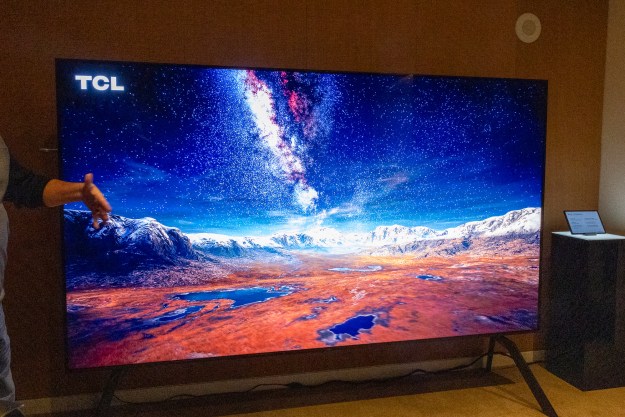Read our full Sony X900B series review.
Sony today unveiled its brand new selection of Ultra HD televisions at CES 2014, including an impressive collection of models from three new series. Along with the announcement, Sony outlined its commitment to combat the woeful lack of 4K content that has thus far plagued the burgeoning realm of Ultra HD viewing. Let’s take a look below at all the new Ultra HD
UHD TVs
Touting its new lineup as providing “4K Ultra HD TVs for every viewer,” Sony’s three new UHD series provide a total of nine new models in a wide variety of sizes, and, therefore, a wider choice of pricing options (though no prices have been revealed for the displays as of yet). The new TVs offer a deep lineup of features, highlighted by Sony’s 4K X-Reality Pro engine, which promises excellent upscaling of HD content to
XBR-X950B
The top dog in the new lineup is the company’s new XBR-X950B series, which comes in the mammoth 85-inch size, and a 65-inch version. The TV employs Sony’s brand new X-tended Dynamic Range Pro technology, which the company claims offers a vivid display of contrast and brilliant detail, driven from direct LED backlight arrays. Other features include Sony’s Triluminos display technology, ClearAudio + sound enhancement, screen mirroring via NFC touch from compatible phones, Sony’s Motionflow 960XBR, and more.
XBR-X900B
The new X900B offers a nearly identical feature set to its sibling above, including X-tended Dynamic Range, though it does so with an edge-lit display. Another shift for the X900B is its wedge-design, which gives the TV a slightly larger profile, but also allows it to incorporate Sony’s Magnetic Fluid speakers, claimed to provide a richer, more immersive sonic experience. The X900B comes in three model sizes, including a 55, 65 and 79-inch model.
XBR-X850B
The 850B is the only new series that doesn’t include the new X-tended Dynamic Range technology, which will make it slightly less eye-popping if you believe Sony’s hype about the new tech. That said, it still offers a bevy of UHD features, the rest of which are all on par with its siblings above. And while the X850B comes in 70-inch and 60-inch models, the lowest tier of the three also dips into the smaller 55-inch, and even 49-inch sizes, which should bring the series into a price segment more manageable for those without a trust fund.
4K content
Aside from the presumed lower pricing options in Sony’s new 4K lineup, the company offers some answers to the other big hang-up about
Sony has continued to work on its 4K Unlimited Download Service, which provides storage of downloadable content, with up to 140 films and TV shows that work with Sony media players. The company has also been growing its “mastered in 4K” Blu-ray content by providing films that have been filmed or remastered in
The new tidal wave of 4K is proof that Sony is all in on Ultra HD, and the lack of any announced OLED TVs thus far further underlines Sony’s recent push away from the technology. We’ll have a closer look at all of Sony’s new
Editors' Recommendations
- What we want to see from the next Apple TV 4K
- Samsung’s new 98-inch DU9000 4K TV is just $4,000. Can it beat TCL and Hisense?
- Vizio’s first 86-inch 4K TV is coming soon, for $999
- Belkin drops a $50 mount for iPhone video calls on Apple TV 4K
- If you don’t see CBS in 4K on YouTube TV, try this



